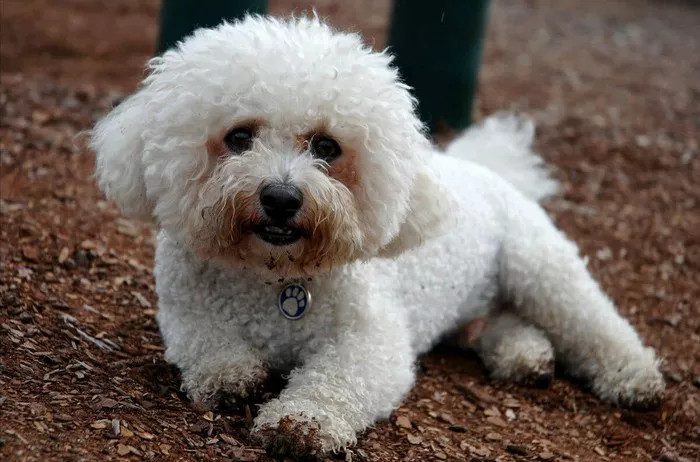Bichon Frises are adored for their fluffy white coats and cheerful personalities. However, maintaining their signature appearance requires careful grooming, particularly when it comes to bathing. While regular baths keep their fur clean and shiny, overwashing can strip natural oils and damage their sensitive skin. This article explores the ideal bathing frequency for Bichon Frises, factors affecting their needs, and step-by-step care tips to ensure their well-being.
Understanding the Bichon Frise Coat
The Bichon Frise’s coat is a double layer consisting of a soft undercoat and a curly outer layer. Unlike many breeds, they don’t shed heavily—instead, their hair grows continuously, making them prone to matting if not groomed properly. This unique structure traps dirt and debris close to the skin, necessitating regular cleaning to prevent irritation and infections.
Factors Influencing Bathing Frequency
The ideal bathing schedule for a Bichon Frise depends on several variables:
Activity Level
Active dogs: Those who spend time outdoors or participate in sports may need baths every 2–3 weeks to remove dirt and sweat.
Sedentary dogs: Indoor pets with minimal activity can typically wait 4–6 weeks between baths.
Coat Condition
Matting risk: Tangled fur traps moisture and bacteria, increasing the need for baths.
Oiliness: Some Bichons develop oily skin, requiring more frequent washes to prevent buildup.
Seasonal Changes
Summer: Heat and humidity may prompt baths every 2–3 weeks.
Winter: Cooler weather allows longer intervals (4–6 weeks) to avoid dry skin.
Skin Sensitivity
Dogs with allergies or dermatitis should follow a vet’s advice, often reducing baths to once monthly.
Age
Puppies: Bathe every 3–4 weeks to avoid stress and skin irritation.
Senior dogs: Adjust based on mobility and skin health, typically 4–6 weeks.
General Bathing Recommendations
While individual needs vary, most Bichon Frises thrive with the following guidelines:
Average frequency: Every 3–4 weeks.
Minimum: No less than once every 6 weeks to prevent matting and odor.
Maximum: No more than once every 2 weeks to protect skin health.
Example scenarios
A playful Bichon who rolls in mud: Bath within 24 hours to prevent staining.
A show dog preparing for competition: Bath 1–2 days before to achieve a fluffy coat.
Signs Your Bichon Needs a Bath
- Visible dirt or stains on the fur.
- Persistent odor despite regular brushing.
- Greasy or sticky texture to the coat.
- Excessive scratching due to trapped debris.
How to Bathe a Bichon Frise Safely
Step 1: Gather Supplies
Dog-specific shampoo: Choose a hypoallergenic or whitening formula.
Conditioner (optional): For dry or tangled coats.Non-slip mat, towels, and a low-heat blow dryer.
Earplugs: to prevent water from entering the ears.
Step 2: Prepare Your Bichon
- Brush thoroughly to remove tangles before bathing.
- Trim nails to avoid scratches during the process.
Step 3: The Bathing Process
- Wet the coat:Use lukewarm water (75–85°F) and avoid spraying directly on the face.
- Apply shampoo: Lather gently, focusing on dirty areas like paws and underarms.
- Rinse completely: soap can cause itching.
- Condition if needed: Apply to the body only, then rinse thoroughly.
Step 4: Drying and Brushing
- Blot dry with a towel to avoid matting.
- Use a blow dryer on low heat, brushing the coat simultaneously to achieve fluffiness.
Post-Bath Care Tips
Check ears: Wipe the outer ear with a dry cloth to prevent moisture buildup.
Inspect paws: Trim hair between pads and check for cuts.
Hydrate skin: Apply a vet-approved moisturizer if the coat feels dry.
Common Mistakes to Avoid
Overwashing: Leads to dry skin, dandruff, and increased shedding.
Using human products: Shampoos designed for humans can disrupt the skin’s pH balance.
Skipping brushing: Tangles become harder to remove once wet.
Leaving fur damp: Increases the risk of fungal infections.
Bathing for Special Situations
Puppies: Start baths at 3–4 months old, using lukewarm water and a calm environment.
Skin conditions: Use medicated shampoos prescribed by a vet.
Shedding seasons: Increase brushing frequency instead of baths to avoid irritation.
Answering Common Questions
Q: Can I bathe my Bichon weekly?
A: While possible, weekly baths may strip natural oils. Reserve this for active dogs or show preparation.
Q: How do I keep my Bichon’s coat white?
A: Use a whitening shampoo, wipe tear stains daily, and avoid prolonged sun exposure.
Q: My Bichon hates baths. What should I do?
A: Gradually acclimate them to water, use treats for positive reinforcement, and keep sessions short and calm.
Q: Should I trim my Bichon’s fur before bathing?
A: Light trimming can help prevent matting, but heavy clipping should be done by a professional groomer.
Conclusion
Bathing your Bichon Frise every 3–4 weeks, adjusted for activity and health, ensures a clean, healthy coat without compromising their well-being. Pair regular baths with daily brushing, proper drying, and vet checkups to maintain their signature fluffiness and vibrant personality. Remember, a well-groomed Bichon isn’t just beautiful—they’re happier and healthier too!
Related Topics:
HOW BIG WILL MY BICHON FRISE GET?
WHAT IS THE LIFE EXPECTANCY OF A MALE BICHON FRISE?


